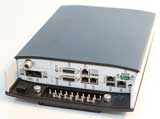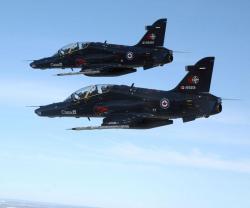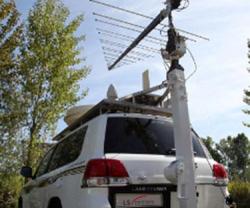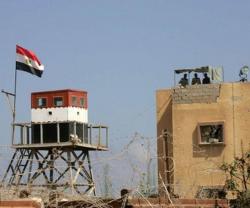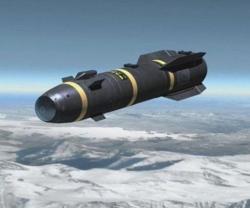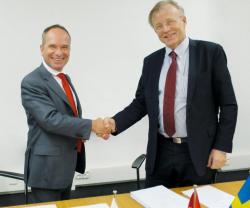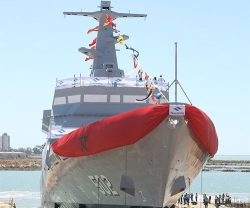Cassidian’s Smallest-Smartest TETRA Base Station
27.05.2011 Europe
At the ongoing TETRA World Congress 2011 (24-27 May; Budapest, Hungary) Cassidian launched the TB3p mini TETRA base station, which is suited for establishing indoor radio coverage, for stand-alone use and for providing areas with temporary radio network coverage.
The TB3p has an extremely small carbon footprint. Its power consumption is only about 40W, which is less than 10% of that of a conventional macro base station.
The TB3p offers exactly the same powerful features as its big brothers TB3 and TB3c, from the TETRA Enhanced Data Service (TEDS) to air-interface encryption and from Type 1 Handover to base station fallback.
TB3p base stations can help eliminate the last gaps in radio network coverage - a benefit that network users will appreciate. The number one application for the TB3p is using it to build indoor coverage, for example for large public buildings, shopping centers or indoor car parks. It is also an extremely cost-effective way of filling coverage gaps. A third example is to use the TB3p as a stand-alone base station to provide hotspot coverage in places which the network may not reach. The TB3p is also easy to deploy for stand-alone or temporary coverage.
The TB3p can help TETRA network operators and owners save money. It does not need a costly site, and it can adapt to the transmission network that is available: it can use conventional time-division multiplexing (TDM) transmission but also Internet Protocol (IP) transmission. The TB3p is approximately the size of a standard laptop PC, and one person can easily carry it to the site, install it and set it up. Once up and running, the TB3p can be operated and maintained over a remote connection, without costly site visits.
Another benefit for network operators and owners comes in the form of the TB3p’s similarity to the TB3 and TB3c macro base stations. They have not only the same set of features, but also the same roadmap and the same compatibility with TETRA radio terminals. The network sees the base stations in the same way, which makes radio network planning easier.
Unveiled for the first time at the TETRA World Congress 2011 in Budapest, Hungary, the TB3p will now be demonstrated in a scenario where a TB3p mini base station is activated to extend network coverage into a tunnel where a car has crashed and caught fire.
The TB3p has an extremely small carbon footprint. Its power consumption is only about 40W, which is less than 10% of that of a conventional macro base station.
The TB3p offers exactly the same powerful features as its big brothers TB3 and TB3c, from the TETRA Enhanced Data Service (TEDS) to air-interface encryption and from Type 1 Handover to base station fallback.
TB3p base stations can help eliminate the last gaps in radio network coverage - a benefit that network users will appreciate. The number one application for the TB3p is using it to build indoor coverage, for example for large public buildings, shopping centers or indoor car parks. It is also an extremely cost-effective way of filling coverage gaps. A third example is to use the TB3p as a stand-alone base station to provide hotspot coverage in places which the network may not reach. The TB3p is also easy to deploy for stand-alone or temporary coverage.
The TB3p can help TETRA network operators and owners save money. It does not need a costly site, and it can adapt to the transmission network that is available: it can use conventional time-division multiplexing (TDM) transmission but also Internet Protocol (IP) transmission. The TB3p is approximately the size of a standard laptop PC, and one person can easily carry it to the site, install it and set it up. Once up and running, the TB3p can be operated and maintained over a remote connection, without costly site visits.
Another benefit for network operators and owners comes in the form of the TB3p’s similarity to the TB3 and TB3c macro base stations. They have not only the same set of features, but also the same roadmap and the same compatibility with TETRA radio terminals. The network sees the base stations in the same way, which makes radio network planning easier.
Unveiled for the first time at the TETRA World Congress 2011 in Budapest, Hungary, the TB3p will now be demonstrated in a scenario where a TB3p mini base station is activated to extend network coverage into a tunnel where a car has crashed and caught fire.
Previous PostLast British Naval Force Leaves Iraq
Latest news
Latest events
Paris Air Show
16 - 22 Jun 2025Paris Le Bourget - FranceDefenPol China2025 - 7th Guangzhou International Defense & Police Exhibition & Summit
11 - 12 Jul 2025Nan Fung International Convention & Exhibition Center (NICEC) - ChinaIDEF 2025 Turkey - International Defence Industry Fair
22 - 27 Jul 2025Istanbul Expo Center - TurkeyDSEI 2025
09 - 12 Sep 2025Excel, London - United Kingdom

